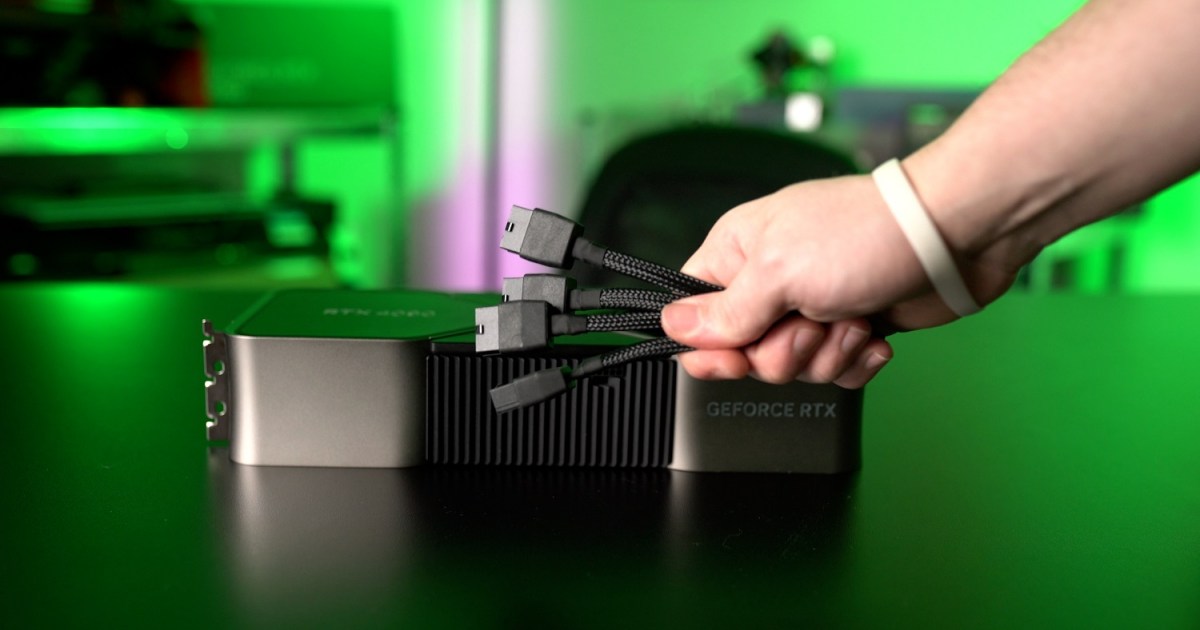User error is not the issue. Design is the problem. More specifically, not leaving enough resistance headroom during design phase is the problem. I've seen plenty of situations where an 8-pin was not plugged in all the way and there was no trouble. The 8-pin standard has been around for 10+ years. How often do you see reports of an 8-pin plug causing a fire from not being plugged in all the way? I cant remember the last time I saw one. Its extremely rare. It almost never happens, and not nearly as much as it does to the 12-pin. I wonder how many instances of 12-pin melting there were when the user made sure it was plugged in all the way, but slowly came out unplugged over time due to weight, gravity, and just the naturals of how the cable sits, when they stood up their case after the build was done and the plug came out just a hair. This can happen.
The PCI-SIG documentation says that the cable can't be safely bent before 35MM to the plug. I dont see any 8-pins with that stipulation. Do you? No? What other electrical cable anywhere on the face of gods green earth do you know of that has a bending stipulation? Anything? No? Oh, me neither. Obviously the designers knew what was up after testing. They knew it was a safety hazard. So, rather than fix the product or scrap it like an intelligent human being would (this costs companies profit), its easier just to fudge the cable a bit, put a bend stipulation on it that no one can adhere to because there is no case that will support that 35MM offset, nevermind the fact that the 35MM straight offset wont stay there, because gravity exists, then, when people's 1600$+ GPUs start melting, and the lawsuits start coming: "Did you leave 35MM away from the plug before bending it?" can be blurted out in the courtroom to pump the user error argument. This is common business practice, equivalent to "fine print" or "the agreement" that they know no one reads. But its not going to fly in court. Its going to backfire
"Install only by a professional."
At the end of the day, all we are doing is plugging an electrical cable into a socket, something mankind has been doing for hundreds of years. What could possibly be so skilled about plugging a cable into a socket, that we need a professional to do it? So now we are done with DIY PC's without a safety compromise? Again, in the court room: "Did you have a professional plug it in for you? Are you a qualified professional? No? USER ERROR!!! LAWSUIT DISMISSED!!!!" Lol. Do you see how this works? These stipulations are designed to protect NVidia in the courtroom. Again, common business practice. Who knew plugging a cord into a socket could be such a skill intensive job?
Ugggh, I could go on forever.....
Gawd dammit. Quit blaming the user and design your products properly. AMD didn't use it on the new Radeon 7000 series because they knew exactly what was up. AMD was thinking. Holy crap were they thinking. Look at that 12 pin connector. Look at those tiny little pins on that stupid thing. You aren't SAFELY jamming 600W through all those tiny little pins on one connector, not even close. There is a reason we had 8 pin connectors. The 8 pins leave much more headroom and are far safer. "We made the new 12 pin to save PCB space" goes NVidia. Lol. There is still plenty of PCB real estate to include 4 8-pins. This 12-pin garbage is just not happening. How did that connector even make it past the design phase?
If someone offered me a 4090 for free, I wouldnt use it. I would off it for 80% MSRP and tell the buyer: You wanna burn your house down, you do you. It's just not worth the risk. Stop delaying the inevitable and quit being so stubborn, and quit blaming the user for your mistakes. Just get the recall over with already so we can move on. Let it be a lesson learned. Stick with the 8-pins. Many a wise man have said: Don't fix what ain't broken. I hope NVidia gets pummeled in this lawsuit. They deserve it for senselessly allowing the safety of their customers to be compromised, and then they have the audacity to blame the user. Lol. Get a grip!!!!


